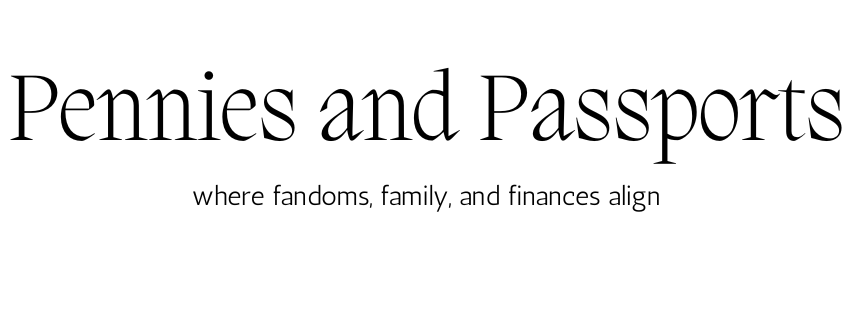
Emergency Fund vs. Travel Fund: Finding the Right Balance for Your Family. Strategies for maintaining financial security while still pursuing your travel dreams.
Emergency Fund vs Travel Fund: Striking the Right Balance for Your Family’s Future
Most families wrestle with a significant financial choice between building an emergency fund and that dream vacation they’ve always wanted. Emergency funds give peace of mind when unexpected costs arise. Yet the thought of creating lasting family memories through travel tugs at every parent’s heart.
Parents often struggle to find middle ground between building their safety net and giving their children experiences that could shape their view of the world.
The silver lining? You don’t need to pick just one path. Your first step should be figuring out the right size of your emergency fund. Then you can balance it with your other goals. We’ll help you protect your family’s future while making space for adventure – whether you’re taking your first steps toward emergency savings or fine-tuning what you already have. Together, we can help you find that sweet spot between staying secure and making memories your family will cherish forever.

Prioritizing Family Financial Security
A strong financial foundation begins with understanding how emergency funds protect our families. Life can throw financial curveballs at anyone – from unexpected medical bills to sudden job losses.
Emergency fund as foundation
An emergency fund works as our family’s financial insurance policy, not just another savings account. We should prepare for several key emergencies:
- Unexpected medical or dental emergencies
- Sudden job loss or income reduction
- Urgent home or car repairs
- Unplanned family travel emergencies
Risk assessment for different family types
Each family needs a unique level of protection. Experts recommend that single-income households keep six months of expenses saved up. Dual-income families might feel secure with three months of savings. Families with young children or unpredictable incomes should lean toward the higher end of this range to stay protected.
Setting realistic savings targets
Financial experts suggest that families need between AUD 18000 to AUD 23000 as a reliable emergency fund. This amount varies based on living expenses and mortgage size. These numbers shouldn’t feel overwhelming. Small steps matter more than no steps at all. Saving just AUD 30.00 weekly adds up to AUD 1,560 yearly.
Breaking down this goal makes it more achievable. Start with one month’s expenses (about AUD 3,000 ). This original target builds confidence, and you can grow it steadily into a larger safety net.
Note that successful emergency funds don’t just depend on the final amount. They need consistency and commitment to your family’s financial security. Your savings become a path to stability when you automate them and treat them as essential monthly expenses.
Building Your Travel Dream Fund
Family adventures create lasting memories, but they need smart financial planning along with our emergency savings. Recent studies show that Americans typically spend 10% of their annual income on vacations, which makes wise planning a vital part of the process.
Defining family travel goals
Let’s begin by setting clear travel objectives. Our family travel goals should include:
- Exposing children to different cultures
- Building stronger family bonds
- Learning new things together
- Having fun and unwinding
Studies reveal that travel tops the list of savings goals for most people. Australian millennials lead this trend with 48% making leisure travel their priority.
Creating a travel savings timeline
Early planning leads to better travel experiences. Booking ahead saves money substantially – experts suggest booking domestic trips 3-4 months ahead and international ones 6-9 months in advance. A typical family vacation fund of AUD 25,000 breaks down into monthly savings targets you can manage easily.
Budgeting for different types of trips
Understanding all cost elements helps create smart budgets. While 74% of Americans end up in debt from vacations, we can avoid this trap. A complete budget should include:
| Expense Category | Planning Consideration |
|---|---|
| Transportation | 20-30% of total budget |
| Accommodation | Look for places with kitchens |
| Activities | Check free museum days |
| Food | Plan to eat 1-2 meals at your place |
Dedicated travel accounts with automatic transfers can help realize travel dreams while protecting emergency funds. This approach ensures steady savings without affecting other financial goals.
Note that average Americans need six months to bounce back financially from a vacation. Starting early and sticking to savings goals helps create amazing family memories without risking financial stability.
Smart Savings Acceleration Techniques
Smart strategies can speed up our savings experience for emergency and travel funds. We need proven techniques that help us reach our financial goals faster.
Side hustle opportunities for families
Strategic side gigs can boost our savings by a lot. Parents can earn up to AUD 6,115.96 monthly through tutoring and career coaching, according to recent data. These family-friendly options won’t overwhelm our schedules:
- Online ESL teaching or educational content creation
- Babysitting or childcare services
- Selling unused items or creating handmade goods
- Renting out unused space or equipment
Reducing family expenses
Our savings rate can increase dramatically with smart expense cuts. Families spend AUD 334.85 monthly on subscriptions on average. We should start by reviewing our recurring expenses:
| Expense Category | Potential Monthly Savings |
|---|---|
| Subscriptions | AUD 167.42 |
| Dining Out | AUD 305.80 |
| Utilities | AUD 50-100 |
Maximizing family cashback and rewards
Regular spending can work harder through strategic rewards programs. Multiple cashback methods combined can earn up to 5% on rotating categories. Success comes from stacking different reward systems:
- Use category-specific credit cards for bonus rewards
- Shop through cashback portals for additional savings
- Utilize store-specific loyalty programs
- Take advantage of seasonal promotions and sign-up bonuses
Careful tracking and prompt redemption of rewards matter because some programs have expiration dates or redemption thresholds. These acceleration techniques can help build both emergency fund and travel savings quickly when used consistently.
Balancing Competing Financial Goals
Managing multiple financial priorities feels like a delicate balancing act – you need to keep all balls in the air without losing your footing. Recent studies show that families should prioritize having three to six months’ worth of expenses in their emergency fund.
Emergency vs vacation vs education savings
Financial experts recommend a clear hierarchy to prioritize savings goals. Emergency funds should come first because they protect against unexpected expenses. You can focus on retirement and education savings after building your emergency cushion. Vacation funds should follow these priorities.
Creating a balanced allocation strategy
A balanced approach to family savings typically follows this distribution:
| Savings Category | Recommended Allocation |
|---|---|
| Emergency Fund | 40-50% of original savings |
| Education | 30-35% of ongoing savings |
| Travel/Leisure | 10-15% of disposable income |
Families with automated savings plans are more likely to achieve their financial goals. You can create separate savings buckets for different objectives and keep your emergency fund as the main focus.
Adjusting priorities as needs change
Your family’s financial needs evolve as it grows, and your savings strategy should adapt to these changes. You should review your allocation if you experience:
- Changes in family income or expenses
- Addition of new family members
- Changes in education costs
- Upcoming major life events
Families who regularly review their financial plans handle unexpected expenses better. The emergency fund levels need quarterly assessment, especially if monthly expenses change by a lot.
Note that having an emergency fund is a vital priority. Research shows that you can improve long-term financial discipline by keeping some balance for discretionary spending like travel. The right mix should provide both security and satisfaction for your family’s unique situation.
Teaching Children About Financial Balance
Teaching our children about money is one of the best gifts we can give them. Money conversations should be a natural part of family life. Young adults who learned about money from their parents are more likely to keep emergency funds and save regularly.
Including kids in savings discussions
Regular family budget meetings create an open environment where everyone learns about money. Monthly family money talks help everyone contribute to financial goals. These discussions let us:
- Track our emergency fund progress
- Check vacation savings targets
- Talk about choices between financial priorities
Creating mini savings challenges
Kids develop good money habits through exciting savings challenges. Here’s how we make saving fun:
| Challenge Type | Goal | Reward |
|---|---|---|
| Round-up Challenge | Save spare change from purchases | Match savings monthly |
| Family Jar Challenge | Collect family’s daily spare change | Use for family treat |
| Travel Savings Goal | Save for specific vacation activities | Special vacation privilege |
Learning from travel planning
Travel planning teaches children valuable lessons about managing money. Kids learn better financial habits when they help plan vacation budgets. They see how saving helps achieve fun goals. Our children learn these skills through travel planning:
- Compare costs between destinations
- Choose between different activities
- Save money for souvenirs or special experiences
These regular money talks help our children build a healthy relationship with money. Children grasp financial concepts better when these discussions start around second or third grade.
Comparison Table
| Aspect | Emergency Fund | Travel Fund |
|---|---|---|
| Recommended Amount | AUD 18,347.88 to AUD 22,934.85 | AUD 25,992.83 (typical family vacation fund) |
| Savings Priority | Main priority (40-50% of original savings) | Secondary priority (10-15% of disposable income) |
| Minimum Timeline | 3-6 months of expenses | 3-4 months ahead for domestic, 6-9 months for international |
| Main Purpose | Financial security for unexpected costs (medical, job loss, repairs) | Cultural enrichment, family bonding, learning experiences |
| Recommended Starting Point | One month’s expenses (approx. AUD 3,057.98) | Not mentioned |
| Saving Frequency | Regular, automated monthly deposits | Regular contributions with advance planning |
| Risk of Not Having | Financial emergencies without safety net | 74% of Americans take on debt for vacations |
| Target Audience Variation | Single income: 6 months expenses Dual income: 3 months expenses | 48% of Australian millennials make leisure travel their priority |
Conclusion
Our family’s well-being depends on building both emergency and travel funds. Many see this as a challenging balancing act, but research proves it’s achievable and necessary. Smart savings strategies and careful planning can protect our financial future and create lasting memories with our loved ones.
The numbers paint a clear picture. A safety net of AUD 18,347.88 to AUD 22,934.85 provides significant security for our families. Allocating 10-15% of our disposable income helps us reach our adventure goals. These targets become more attainable through smart acceleration techniques – from side hustles to cashback rewards.
This balanced approach teaches our children valuable life lessons about financial responsibility and goal setting. Their understanding of money management grows stronger as they participate in emergency and travel fund discussions. The rewards of careful planning become clearer to them.
The right balance for each unique family situation leads to success, not choosing between security and experiences. Small weekly savings of AUD 30.58 or automated monthly transfers – each step brings us closer to both financial security and unforgettable family adventures.
More posts like this : Finance and Money Saving Tips





